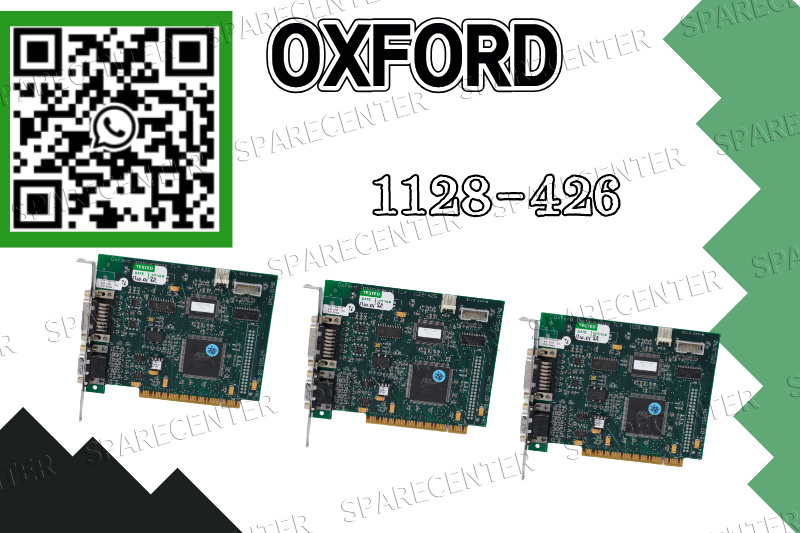| Introduction
The ability to accurately monitor and manipulate temperatures at cryogenic levels, often approaching absolute zero, directly impacts the validity of experimental results and the performance of delicate quantum devices. This is where specialized equipment like the OXFORD 1128-426 comes into play. As a sophisticated component in high-performance cryogenic systems, the OXFORD 1128-426 is engineered to meet the demanding requirements of these advanced applications, offering unparalleled accuracy, stability, and versatility in extreme cold environments. This article will delve into the critical role and advanced features of the OXFORD 1128-426, highlighting its contributions to scientific research and technological advancement in cryogenic measurement. Engineered for Extreme Environments: Design and Functionality The OXFORD 1128-426 is not just another temperature sensor; it's a meticulously designed instrument tailored for the unique challenges of cryogenic environments. Its primary function revolves around providing highly accurate and stable temperature readings within cryostats, dilution refrigerators, and other low-temperature setups. The design considerations for such a device are rigorous, demanding materials that maintain their electrical and mechanical properties at temperatures ranging from milliKelvin to tens of Kelvin, alongside robust construction to withstand thermal cycling. Key to the OXFORD 1128-426's performance is its sensing element, which is often a carefully selected and calibrated resistance thermometer, such as a ruthenium oxide or cernox sensor. These materials exhibit a strong and predictable change in resistance with temperature, making them ideal for precision measurement at very low temperatures where other temperature sensor types lose their sensitivity. The module itself integrates advanced signal conditioning and linearization circuitry, converting the raw resistance measurements into highly accurate temperature readings that can be easily interfaced with data acquisition systems. Furthermore, its compact form factor and specialized wiring are designed to minimize heat leaks, a critical factor in maintaining ultra-low temperatures within a cryostat. The OXFORD 1128-426 typically features multi-channel capabilities, allowing for simultaneous monitoring of several points within a cryogenic measurement system, providing a comprehensive thermal profile. Its robust shielding and noise reduction techniques ensure that external electromagnetic interference does not compromise the integrity of the delicate low-level signals, ensuring the reliability of the data even in complex experimental setups. This ensures the precision needed for groundbreaking scientific research. |
|
The profound impact of the OXFORD 1128-426 is evident across various scientific disciplines and emerging industries. In fundamental low-temperature physics research, the ability to precisely control and measure temperatures is crucial for experiments exploring superconductivity, superfluidity, and quantum phenomena. Researchers rely on the accuracy provided by devices like the OXFORD 1128-426 to validate theoretical models and observe subtle effects that only manifest at near-absolute zero temperatures. Without such precision in cryogenic measurement, distinguishing between genuine quantum effects and thermal noise would be virtually impossible.
Beyond academia, the OXFORD 1128-426 plays a vital role in the burgeoning field of quantum computing. Quantum processors, with their highly sensitive qubits, operate optimally only at extremely low temperatures to maintain their fragile quantum states within a cryostat. Accurate temperature monitoring, facilitated by the OXFORD 1128-426 as a reliable temperature sensor, is essential for ensuring the stability and performance of these quantum bits, directly influencing the computational power and reliability of quantum computers. Similarly, in the development of advanced materials, particularly those exhibiting novel properties at low temperatures (e.g., high-temperature superconductors, topological insulators), the OXFORD 1128-426 provides the necessary thermal insights for characterization and optimization within materials science. Its reliability and ease of integration into existing cryogenic infrastructure and data acquisition systems make it a preferred choice for leading research institutions and high-tech companies globally, solidifying its position as a cornerstone of modern cryogenic measurement and furthering scientific research.
Conclusion
Recommended Models
| SDV144-S33 | EH1*A | RS81*B AS S9826AM-0 |
| AIP532 S1 | ER5*B | ST3*D AS S9181AQ-0 |
| PW302 S4 | ER5*C | ST4*D AS S9191AQ-0 |
| SAI143-S63 | ET5*B | VM1*D S9210AQ-03 |
| PS31*A | EXT*A | AD5*D |
| ST5*A | MX3*D | EH0*A |
| AMM52 S4 | PS35*A | ET5*C |
| SAI533-H33/PRP S1 | CP99A*A S9581AS-0 | EC0*A AS E9740GA-02 |
| BT100 | EA1*A AS E9740A-07 | DX11*A S9081BE-0 |
| CP11*C AS S9291AS-0 | MAC2*B AS S9310AQ-05 | EB401-50 S1 |
| ADM12 S4 | VI702 | ANB10D-S1 |
| ADM52-2 S4 | 0950-3017 PS605-0101 | SB401-10 S1 |
| AMM22 S3 | F3RP45-2P/L1 | EA1*A |
| AMM32 S3 | MRI-234*B | ECO*A |
| AMM32J S1 | NP53*A | MX2*D |
Cryogenic Measurement Cryogenic Measurement Cryogenic Measurement Cryogenic Measurement Cryogenic Measurement Temperature Sensor Temperature Sensor Temperature Sensor Temperature Sensor Temperature Sensor Temperature Sensor Temperature Sensor Temperature Sensor Materials Science Materials Science Materials Science Materials Science Materials Science Materials Science Materials Science Materials Science Materials Science Materials Science Materials Science Reliability Reliability Reliability Reliability Reliability Reliability Reliability Reliability Reliability Reliability Reliability Reliability Reliability Reliability Reliability Reliability Reliability Reliability Reliability
If you want to more details,please contact me without hesitate.Email:sales@sparecenter.com



